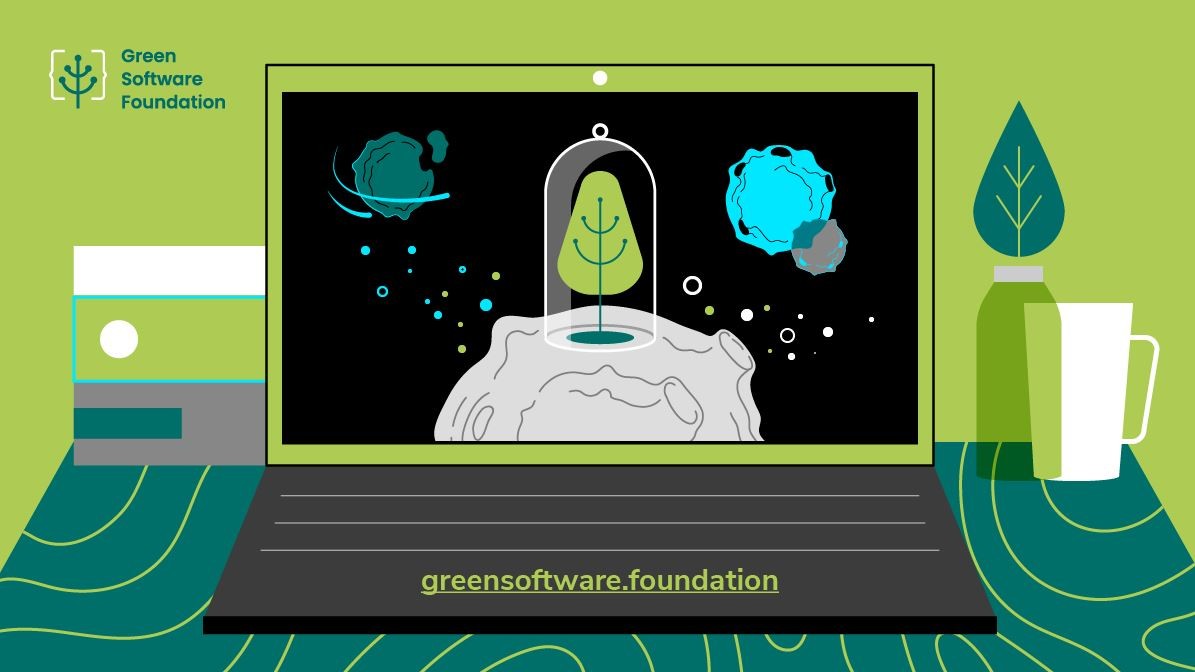What is green software ?
Green software, also known as eco-friendly software or sustainable software, refers to software applications and systems that are developed and designed with environmental considerations in mind. It aims to reduce the ecological impact of software throughout its entire lifecycle, including development, deployment, usage, and disposal.
The concept of green software emerged from the growing awareness of the environmental impact of information and communication technology (ICT) and the need for more sustainable computing practices. Green software focuses on optimizing energy consumption, reducing carbon emissions, minimizing resource usage, and promoting environmentally friendly behaviors in software development and usage.
Here are some key aspects and practices associated with green software:
- Energy Efficiency: Green software aims to minimize energy consumption during both development and runtime. This involves optimizing algorithms, reducing computational complexity, and employing energy-efficient coding practices.
- Resource Optimization: Green software strives to minimize resource usage, such as memory, processing power, and network bandwidth. By optimizing resource utilization, it reduces the energy requirements of software and its impact on hardware infrastructure.
- Virtualization and Cloud Computing: Leveraging virtualization and cloud computing technologies can lead to improved energy efficiency and resource utilization. It allows for dynamic allocation and scaling of resources based on demand, reducing the need for excessive hardware infrastructure.
- Green Software Development Practices: Green software promotes sustainable software development practices, such as code optimization, modular design, and efficient data management. It encourages the use of efficient algorithms and data structures, which can minimize computational requirements and reduce energy consumption.
- Lifecycle Management: Green software considers the entire lifecycle of software, including its deployment, usage, and disposal. It focuses on reducing waste and promoting proper recycling and disposal of software and hardware components.
- User Awareness and Behavior: Green software aims to raise user awareness about energy consumption and encourage eco-friendly behaviors. It may include features such as energy usage monitoring, user feedback on energy-efficient practices, and suggestions for reducing the environmental impact of software usage.
By incorporating these practices, green software aims to mitigate the environmental impact of software development and usage, contributing to a more sustainable and eco-friendly computing ecosystem.
Why green software is used ?
Green software is used for several reasons, primarily driven by the desire to mitigate the environmental impact of software development and usage. Here are some key reasons why green software is used:
- Environmental Responsibility: Green software reflects a commitment to environmental responsibility and sustainability. By developing and using software that is optimized for energy efficiency and resource utilization, organizations and individuals can minimize their carbon footprint and contribute to a greener and more sustainable future.
- Cost Savings: Green software can lead to significant cost savings in terms of energy consumption and infrastructure requirements. By optimizing software for energy efficiency, organizations can reduce their electricity bills and operational costs. Additionally, by utilizing virtualization and cloud computing, companies can achieve better resource utilization and reduce the need for excessive hardware infrastructure.
- Regulatory Compliance: Many countries and regions have introduced regulations and guidelines to promote energy efficiency and reduce carbon emissions. Green software helps organizations comply with these environmental regulations and avoid potential penalties or legal issues.
- Reputation and Stakeholder Expectations: Consumers, investors, and other stakeholders increasingly value environmental sustainability and responsible business practices. By adopting green software, organizations can enhance their reputation and meet the expectations of environmentally conscious stakeholders.
- Competitive Advantage: Green software can provide a competitive advantage by differentiating organizations from their competitors. Companies that demonstrate a commitment to environmental sustainability may attract environmentally conscious customers, partners, and employees, thereby gaining a competitive edge in the market.
- Long-term Sustainability: Green software promotes long-term sustainability by encouraging efficient use of resources and reducing waste. It supports the circular economy principles of reducing, reusing, and recycling, thereby contributing to a more sustainable and resilient software ecosystem.
Overall, green software is used to address environmental concerns, achieve cost savings, comply with regulations, enhance reputation, gain a competitive edge, and contribute to long-term sustainability. It represents a proactive approach to reducing the ecological impact of software and advancing environmentally responsible practices in the digital domain.
When green software is used ?
Green software is used in various contexts where there is a need to reduce the environmental impact of software development and usage. Here are some common scenarios where green software is employed:
- Software Development: Green software principles can be applied during the development phase to create energy-efficient and resource-optimized software. Developers can use coding techniques and algorithms that minimize computational requirements, optimize resource utilization, and reduce energy consumption.
- Data Centers and Cloud Computing: Green software practices are particularly relevant in data centers and cloud computing environments. By optimizing virtualization, workload distribution, and resource allocation, energy consumption can be minimized. Green software can help ensure efficient utilization of server resources, cooling systems, and power management techniques, thereby reducing the carbon footprint of data centers.
- Mobile Applications: With the proliferation of smartphones and tablets, mobile applications have become a significant part of daily life. Green software techniques can be applied to mobile app development to optimize battery usage, minimize data transfer, and reduce the overall energy consumption of mobile devices.
- Internet of Things (IoT): IoT devices are becoming increasingly prevalent, and they often require software to function. Green software can be used to develop energy-efficient IoT applications that minimize power consumption and optimize data transmission, improving the overall sustainability of IoT systems.
- Enterprise Software: Green software practices can be applied to enterprise software solutions, including business applications, customer relationship management (CRM) systems, and resource planning software. By optimizing the software’s performance, resource usage, and energy consumption, organizations can reduce their operational costs and environmental impact.
- User Applications and Tools: Green software can be used in applications and tools that help users monitor and manage their energy consumption. These tools can provide insights into energy usage, suggest energy-saving measures, and encourage environmentally friendly behaviors among users.
- Software Disposal and Recycling: Green software also encompasses the responsible disposal and recycling of software and hardware components. Proper decommissioning, data sanitization, and recycling practices ensure that software and hardware do not contribute to electronic waste and are managed in an environmentally friendly manner.
In summary, green software is used across various domains, including software development, data centers, mobile applications, IoT, enterprise software, user applications, and software disposal. Its usage aims to reduce energy consumption, optimize resource utilization, and promote sustainable practices throughout the software lifecycle.
Case study on green software
Case Study: Green Software in Data Center Optimization
Company: XYZ Corporation
Background: XYZ Corporation is a large multinational company with multiple data centers spread across different locations. The company operates a wide range of online services and applications, resulting in significant energy consumption and carbon emissions. To address their environmental impact, XYZ Corporation embarked on a green software initiative to optimize their data centers and reduce energy consumption.
Goals:
- Reduce energy consumption and carbon emissions in data centers.
- Improve resource utilization and efficiency.
- Minimize hardware infrastructure requirements.
- Maintain or enhance the performance and reliability of services.
Implementation:
- Energy-efficient Coding: The development team at XYZ Corporation adopted energy-efficient coding practices. They optimized algorithms and implemented efficient data structures to reduce computational requirements and improve software performance.
- Virtualization and Consolidation: The company implemented virtualization technologies to consolidate servers and improve resource utilization. Virtualization allowed for better allocation and scaling of resources based on demand, reducing the need for excessive hardware infrastructure.
- Dynamic Workload Management: XYZ Corporation implemented intelligent workload management systems that dynamically allocated and balanced workloads across servers based on their energy efficiency and utilization levels. This ensured optimal resource allocation and reduced energy consumption.
- Power Management: The company deployed power management techniques, such as dynamic voltage scaling and server power capping, to optimize energy consumption during periods of low demand. These techniques allowed for better control over power usage, reducing wasted energy.
- Cooling Optimization: XYZ Corporation implemented cooling optimization strategies in their data centers. They employed efficient cooling techniques, such as hot aisle/cold aisle containment and airflow management, to reduce cooling requirements and improve energy efficiency.
- Energy Monitoring and Reporting: The company implemented energy monitoring systems to track and analyze energy consumption in real-time. This data was used to identify areas of improvement, set energy reduction targets, and report on progress towards environmental goals.
Results:
- Energy Consumption Reduction: By implementing green software practices, XYZ Corporation achieved a significant reduction in energy consumption across their data centers. This led to a substantial decrease in carbon emissions and lower operational costs.
- Resource Utilization Improvement: The utilization of server resources improved due to virtualization and workload management techniques. This resulted in better efficiency and reduced idle resources, further contributing to energy savings.
- Cost Savings: The energy optimization measures led to substantial cost savings for XYZ Corporation. The reduced energy consumption resulted in lower electricity bills and decreased maintenance costs associated with cooling infrastructure.
- Environmental Impact Reduction: The company successfully reduced its carbon footprint and demonstrated its commitment to environmental sustainability. XYZ Corporation’s green software initiative aligned with their corporate social responsibility goals and enhanced their reputation as an environmentally conscious organization.
Conclusion:
XYZ Corporation’s implementation of green software practices in their data centers resulted in tangible benefits in terms of energy consumption reduction, improved resource utilization, and cost savings. By optimizing their software and infrastructure, they achieved significant environmental impact reduction while maintaining or enhancing the performance and reliability of their services. This case study highlights the effectiveness of green software in mitigating the environmental impact of data center operations and demonstrates the potential for adopting sustainable practices in the IT industry.
White paper on green software
This white paper explores the concept of green software and its significance in fostering a sustainable future in computing. With the increasing environmental concerns and the rapid growth of the software industry, it is crucial to address the environmental impact of software development and usage. Green software offers a holistic approach to reduce energy consumption, optimize resource utilization, and promote eco-friendly practices throughout the software lifecycle. This white paper provides an overview of green software principles, highlights its benefits, and discusses the challenges and opportunities in adopting green software practices. It also presents case studies showcasing successful implementations of green software. By encouraging the adoption of green software, we can collectively contribute to a greener and more sustainable computing ecosystem.
- Introduction 1.1 Background 1.2 Objectives of the White Paper
- Understanding Green Software 2.1 Definition and Scope 2.2 Environmental Impact of Software 2.3 Key Principles of Green Software 2.4 Lifecycle Approach: Development, Deployment, Usage, and Disposal
- Benefits of Green Software 3.1 Environmental Impact Reduction 3.2 Cost Savings and Efficiency 3.3 Regulatory Compliance and Reputation 3.4 Long-term Sustainability and Circular Economy
- Challenges and Opportunities 4.1 Technical Challenges and Solutions 4.2 Cultural and Organizational Shifts 4.3 Collaboration and Knowledge Sharing 4.4 Policy and Regulatory Support
- Green Software Implementation Strategies 5.1 Energy-efficient Coding Practices 5.2 Resource Optimization and Virtualization 5.3 Cloud Computing and Data Centers 5.4 User Awareness and Behavioral Change 5.5 Sustainable Software Disposal and Recycling
- Case Studies 6.1 Green Software in Data Center Optimization 6.2 Energy-efficient Mobile Applications 6.3 Green Software in Enterprise Solutions
- Conclusion 7.1 Summary of Key Findings 7.2 Importance of Green Software for a Sustainable Future 7.3 Call to Action: Embracing Green Software Practices
- References
This white paper aims to provide a comprehensive overview of green software, its benefits, challenges, and implementation strategies. It is intended for software developers, IT professionals, policymakers, and individuals interested in promoting sustainability in the software industry. By adopting green software practices, we can minimize the environmental impact of software and work towards a more sustainable and eco-friendly computing ecosystem.





